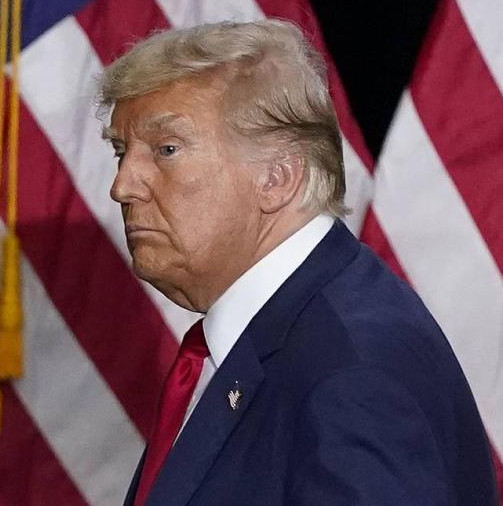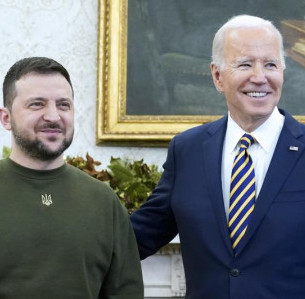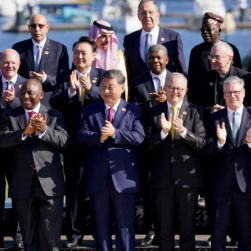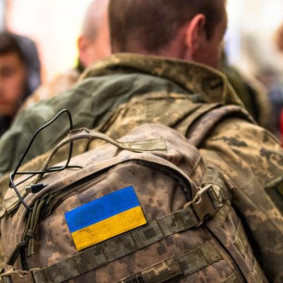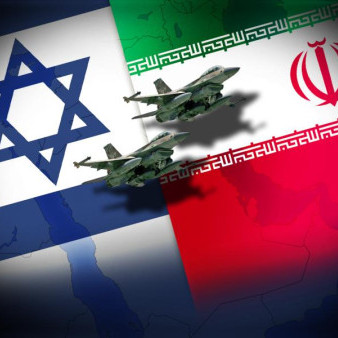There are two key conditions underlying a nation’s security: first, a developed regulating basis, and second, mutual trust required to work on agreements. The latter element is largely determined by the new-generation politicians’ willingness to consistently follow the previous generation’s course. History allots around 35 or 40 years for each of the conditions to emerge. In this sense this world is drawing toward its Rubicon today. The NATO summit hosted by the Latvian capital Riga, is in fact the venue of political “novices” whose political “infancy” has coincided with the emergence of a unipolar world. Many of them are covertly wondering why it is so important to reach agreements, when it is much easier to dictate. The so-called “trust philosophy,” established by the 1972 Moscow-Washington ABM Treaty, looks even more speculative to them.
The ABM philosophy smacked of the old Jesuit maxim: make each other vulnerable to the extent which would leave no winners if the worst comes to the worst. It followed that a strategic offensive reduction – of the virtually “suicidal” weapons – was a logical stage within the global disarmament process. The sides agreed to cut their ABM systems to 100 or less interceptor missile launchers in two regions each – the capital city and the national strategic missile base only. Limits were set on the number and characteristics of their detection radars and spacetrack warning systems, too. In 1974, the two nations went even further relying on the AMT’72: they agreed to limit their ABM systems to one region each. The Soviet Union chose Moscow, while the US, its Grand Fox missile base in North Dakota. That one was followed by a breakthrough in cutting strategic and offensive arms, as is clear from the following acronyms: SALT-1 (1974), SALT-2 (1979), START-1 (1991) and START-2 (1993). In 1987, Russia and the US signed the Intermediate Nuclear Forces (range between 500 and 5,000 kilometers) treaty, a follow-up to the reduction trend.
The seven treaties brought the number of each nation’s nuclear warheads down from the initial 10,000 to 3,000 by the turn of the millennium, and laid the foundation for the global security regardless of the changes that occurred after 1972. The “intercontinental missile” security had to be backed up by the “field” security, so the next step was made. It was the 1990 Treaty on Conventional Armed Forces in Europe (CFE), the key regulator of all military activities along the East-West axis. All of these treaties seemed a solid basis for further agreements. However, in 2001, the United States withdrew from the ABM treaty, apparently deeming it antiquated in the face of new challenges. The US withdrawal resulted in the “suspension” of the other treaties because their wording relied heavily on the “Jesuit maxim” mentioned. CFE, too, became almost senseless, as it was based on the block parity principle.
A new missile crisis is drawing near, accompanied by passionate speeches of “common challenges.” The idea of the US NMD (National Missile Defense) which replaced the former ABM system is to protect the US and allied forces stationed abroad as well as the territory of the United States, from a missile attack. So far, the Pentagon has deployed 10 interceptor missiles of the 100 planned at two NMD bases, one in Alaska, the other, in California. There are plans to place another 10 long-range interceptors in Eastern Europe, namely, in Poland, allegedly under the threat of Iran’s missile strike upon Europe and America.
This talk of defense against Iran on the Poland-Belarus border is purely speculative. Iran’s 3,500-kilometer-range “Shahab-threes” can reach Europe, but not the US. The shortest way to Europe from Iran is via the Caucasus, the Black Sea, Ukraine and Hungary, but not via Russia. The US assures its NMD is not aimed against Russia, but fails to come up with anything specific to confirm this statement. On the other hand, practice shows that, once a US military base is built, a solid military infrastructure usually appears in the region where its antimissiles are deployed. This scenario would lead to an eventual collapse of CFE. First, the European segment of the American NMD would require an air-cover, which means NATO air-forces would be moving closer to the borders of Belarus, a Russian ally. Second, the region would require radar stations, which, in turn, would need security. To ensure their security, America would have to use additional anti-aircraft forces, air forces and ground troops. In addition, there is a possibility to use NMD facilities for other purposes: attack missiles can be installed in adjusted launching tubes.
It is important that the NMD system is gradually covering the whole of the US territory, which arithmetically is 6 or 7 times higher than the former “vulnerability threshold.” It also shows the obvious hold-off angle of the hypothetical missile attack. If the threat comes from Iran, why is the biggest NMD construction site located in Alaska? China reacted to America’s withdrawal from ABM’72 in the same way as Russia did. Beijing knows only too well who would win a war no one’s expecting yet: the one who would outmatch the enemy in time and space. No wonder the US has placed its main missile attack force (over 2,000 missiles) on submarines, not on land, like Russia and China did. If America deploys its NMD system as planned, it would need 60 or 80% less time to get ready for rebuffing a missile attack.
The arguments America is using to justify its NMD largely boil down to denying its very name, saying it is not quite “national,” but rather “global” and “anti-terrorist.” But terrorists do not use missiles. The thirty-something scenarios of new “September 11” offered by criminal genius include more than 20 (undisclosed, of course), which are “shockingly simple and effective.” What do Alaska and Poland have to do with it? What is all that for?
First of all, to show who is who, not just to Russia, but to the rest of Asia/Eurasia as well. Second, to achieve a combined techno-economic effect. Ronald Reagan’s strategic defense initiative, the precursor of today’s NMD, surely enriched America, even if failed to bankrupt the Soviet Union (as many thought it would), burdened by the Afghan war at the time. Irrespectively of the safety of the missile-defense “umbrella” above the United States, the 23-year implementation of the “star wars” program gave a prod to development of high technologies, resulting in 252 programs on the national scale. The $130 billion invested in them since 1983 brought double revenues to three hundred contractors and subcontractors, who converted the Pentagon’s orders into development of conventional “Windows.” NMD will obviously create a comparable technological and economic reserve for several decades to come, estimated at $300 million. Will Siberia produce enough oil for an adequate response to “Lord Curzon”?
Until recently, the European nations agreed there was a better idea than building a new missile-defense system involving long-range interceptors. It was to modernize the anti-aircraft systems already in place in Europe, which have the potential of ballistic missile interception. The project could involve joint usage of Western and Russian-made equipment to protect army units during peacekeeping operations. It was documented in the Russia-NATO 2002 Declaration signed in Rome. However, NATO later dismissed this plan as infeasible because of different standards.
Objectively, Brussels took no account of any of Moscow’s concerns, and never agreed to a single Russian proposal to strengthen mutual security. NATO provided no guarantees that it would not deploy nuclear weapons in its new member countries; it didn’t undertake a no-first-use commitment, while Russia is still bound by one. NATO representatives refused to discuss the inadmissible build-up of military infrastructure in close proximity of the Russian border, while Russia is reducing one of its own through natural wear-and-tear, refraining from re-equipment.
Brussels has rejected Moscow’s proposal to reduce military activity along each other’s borders. On the contrary, NATO is actively forming a Baltic-Black-Caspian-Sea responsibility zone and a Balkan-Asia Minor bridge-head (military bases in the former Yugoslavia, two in Bulgaria, one British base in Cyprus, and US bases in Turkey). Georgia and Azerbaijan are to come next, followed by Armenia, to our regret. Russia is undeviatingly abiding by another international commitment, delivering no arms to crisis zones and training no soldiers of conflicting sides. We even stopped exports of purely defensive weapons to Sirya, let alone Iran, after Israel’s aggression against Lebanon. The US Congress allocated $10 million to prepare Georgia’s entry into NATO. But, isn’t Georgia currently involved in conflicts with Abkhazia and South Ossetia?
Irrespective of the final communiqué, the Riga Summit could have a counterpoint: invitations to become NATO partner countries could be issued to Finland and Sweden rather than to Georgia and Ukraine. The recipients of such invitations could also include Japan, Australia and South Korea – nations in the Asia-Pacific Region which have bilateral military-political ties with the United States. Bringing together NATO and America’s Asia-Pacific allies is a step toward unhinging or even shattering the very structure of East-West agreements. What kind of trust are we talking about then?
Thus, an absurd situation develops: 2007 is announced the “Russia-NATO Cooperation Year,” but in fact Russia is facing a strange dilemma. It will either have to accept all that is going on as “partnership,” or admit it wants no cooperation at all. In this situation Russia will have to reconsider its interests. The multipolar chaos, the de facto proliferation of nuclear weapons, the possible defeats of the US in Iraq and NATO in Afghanistan, all of that will soon call for a “new partnership” diplomacy, or even a “new cooperation” one. Otherwise, we might end up in isolation. At least those who visit Beijing more often than Washington say so.
